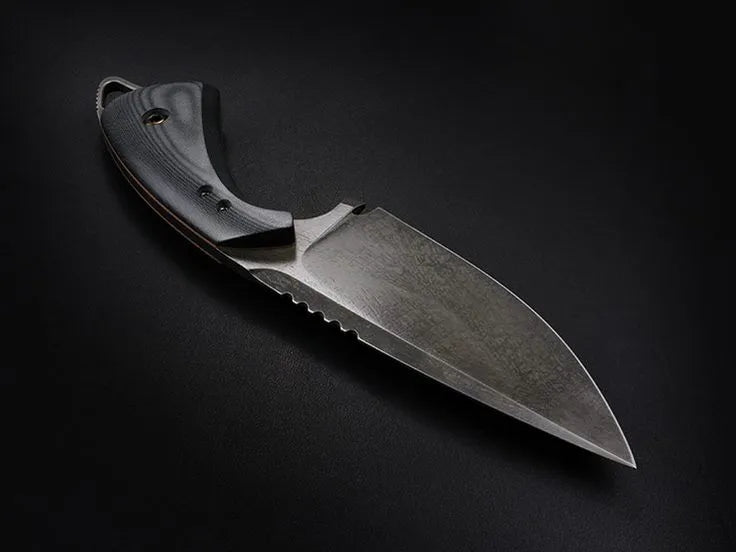
When Must a Knife be Cleaned And Sanitized?
When must a knife be cleaned and sanitized? The main concern of hygienists and regulatory bodies is the cleanliness and sanitization of cutlery. The general purpose is to achieve the common goal of sensitizing cutlery users and professionals to clean and sanitize the whole cutlery, including knives, after every use. Similarly, tools like a Viking Axe, which are used in outdoor or survival settings, also require proper cleaning and maintenance to prevent rust and ensure longevity. Regular sanitation is key for both cutlery and tools to maintain their functionality and hygiene.
Importance of Cleaning Kitchen Knife
Cleaning knives is as important as cleaning utensils, cleaning of home, and even cleaning ourselves. Thus cleaning is part and parcel for a healthy life as eating healthy food. Cleaning practice is compulsory for every knife user from novice to professional and housemaid to housewife. There is no relaxation for this important aspect of hygiene. Even outdoor usage of knives is not exempted from cleaning and sanitization treatment. Some knives have a greater share in outdoor usage but with no exception to sanitization e.g., the Bowie Knife. Cleaning keeps the knives impurity-free and bacteria-free. Cleaning is generally a manual activity. Food particles are removed, and the knife is washed with hot water and soap.
Importance of Sanitising Kitchen Knife
Sanitizing is another compulsory process to keep kitchen knives bacteria—and other germs-free and safe to use. Sanitising is recommended for every knife irrespective of its usage frequency e.g. a Skinner Knife. Sanitization plays a crucial role in our protection. It also shields our food from harmful bacteria. Sanitizers are used to sanitize cutlery. A kitchen knife is first cleaned and then sanitized.
Different Cleaning Techniques to Clean a Kitchen Knife
Cleaning techniques can be divided into two broad categories. i.e. manual and mechanical. Here are some manual techniques to clean cutlery(Kitchen knife):
- Food particles are removed from the knife's surface using manual cleaning. A sponge or scrubber is used for this purpose.
- The use of a commercial dishwasher is also a good technique to remove food particles.
- Knives are first soaked in cleaning solutions. Later they undergo hot water showers. This treatment removes food particles and tough food stains from the blades. Baking soda or white vinegar are also good cleansing solutions. The soaking period of knives varies according to the availability of the solution.
- After soaking, comes the drying phase. In this phase, knives are dried and kept in a hygienic environment.
Mechanical Cleaning
In mechanical cleaning, different mechanical apparatus are used to clean the knives. The primary purpose of using mechanical mechanisms is to save time due to large-scale activity. For this purpose, we use a commercial dishwasher, detergent, or cleaner with a high temperature. A Chef knife is also cleaned using this technique in the hotel industry. In another mechanical cleaning technique, ultrasonic waves are used as a cleaning agent.
How to clean a Kitchen knife?
Cleaning a knife is a daily activity. Food material stains the blade and other parts of the knife. So, every nook and corner must be taken care of while cleaning a knife so that harmful bacteria may not infiltrate the porous parts of the knife. Generally, bacteria move to hidden parts of the knife. The blade and wooden part(handle) are open parts of the blade as well as the bolster. But bacteria move into porous parts of the wooden handle or any room between the bolster and blade. Even the tang portion can be a germinating place of bacteria. Follow manual cleaning techniques as given above for proper cleaning of knives.
How to sanitize a Kitchen knife?
The knife can be sanitized by using hot water. Remaining submerging it in a chlorine or ammonium solution. However, white vinegar and baking soda can also be used as sanitizing agents.
Cross-Contamination
Cross-contamination is also a possible harm that can cause food wastage or illness in the human body. It is a term that describes the specific use of each knife for each activity. If different food is processed with the same knife, it can contaminate food. To understand this, we can draw an analogy between milk and yogurt. As a yoghurt-carrying spoon can spoil the milk, in the same fashion, one knife contacting opposite-nature food can spoil it and further disturb our gastric system. Cross-contamination can be prevented by using different knives and proper management of the kitchen.
Final Words
When must a knife be cleaned and sanitized? A knife must be cleaned and sanitized after every use, regardless of its frequency and environment.








